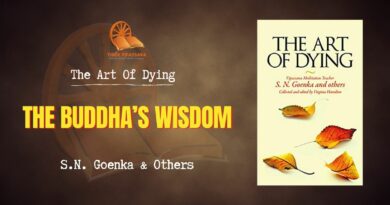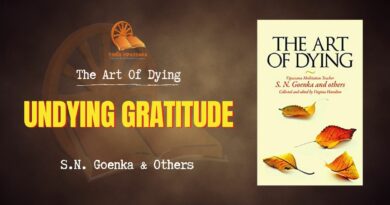An Exemplary Death
The following article first appeared in the Vipassana Newsletter, Dhamma Giri edition in April 1997.
Dr. Tara Jadhav attended her first Vipassana course in 1986. Her search was over; she had found the pure path of Dhamma and felt no need to explore any other path or technique. With single-minded dedication she began to walk on this path.
Since Tara did not have other responsibilities, she spent most of her time progressing in Dhamma. With her abundant store of pāramitā (virtuous qualities), she was able to practice Vipassana easily. Like a fish in water that does not have to be taught to swim, Tara did not have to be given any special training. No doubt she had walked on the path of Dhamma in many previous lives.
She had the technique as well as facilities available for practice, and so she became engrossed in making best use of her time. Since the qualities of mettā (loving-kindness) and karuṇā (compassion) and a capacity for selfless service were well developed in her, she was appointed an assistant teacher in 1989 and a senior assistant teacher in 1995. In spite of old age she continued to give Dhamma service with great devotion. While guiding students in Vipassana she kept strengthening her pāramī of dāna.
At the ripe age of 82 she came to Dhamma Giri to take part in a Teachers’ Self-Course. On the morning of December 2, 1996, the course started with ānāpāna, as usual. She practiced intently throughout the day. After meditating in her cell from 6 to 7 pm she came to the Dhamma hall for the discourse.
At about 7:30 pm, as soon as the discourse began, she knelt with palms and head upon the floor to pay her respects. Once, twice, and after she touched her head to the floor for the third time, she did not raise it again. She breathed her last in the traditional posture of the Dhamma salutation.
Women meditators sitting nearby were surprised to see her bowing thus, because respects are usually paid three times only at the end of a discourse. Why was she offering her respects at the beginning? All three times, while lowering her body, she softly repeated, “Anicca, anicca, anicca”—her last words. How could they have known this was to be her final salutation in this life?
All serious meditators are taught that they should never pay respects mechanically. Only when one is equanimous, aware of the impermanence of sensations at the top of the head, is the salutation meaningful. Tara would always bow in this deliberate manner. Her final salutation was all the more deliberate and meaningful.
Tara would tell her Dhamma sisters, “In this twilight of my life I have only one desire: I should give up my body while meditating on this Dhamma land.” Her strong Dhamma wish was fulfilled. Becoming established in Vipassana, on the path of liberation, she lived a life of Dhamma and ultimately achieved an exemplary death.
—S.N. Goenka
Bài viết này được trích từ cuốn sách The Art of Dying – Thiền Sư S.N.Goenka và nhiều tác giả khác.









